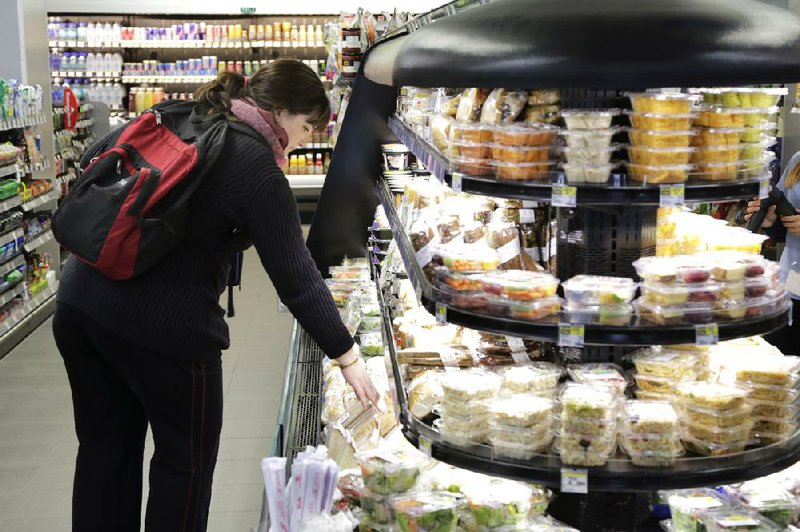If you're an average American (you're above average, yes, but let's pretend), you throw away about one-quarter of all the food you buy -- much of it still perfectly safe to eat. That's as much as $2,275 worth of food wasted annually by a family of four, according to the Natural Resources Defense Council.
Beyond the out-of-pocket cost, it's also a waste of water, energy and the manpower needed to produce all that food. Not to mention the lost opportunity of feeding the hungry.
"It's interesting because food waste in the home is mostly a problem in developed countries," says William Fisher, vice president of science and policy initiative for the Chicago-based Institute of Food Technologists. "In developing countries, the problem is getting food from the fields to the consumer before it spoils."
One of the biggest reasons behind the waste in developed countries is a misunderstanding over when, exactly, food goes bad and should be tossed for safety's sake. That's because the sell-by, use-by, best-by dates on product packaging are often confusing, even misleading. Studies show that up to 91 percent of us have tossed food based on product labels -- which may have nothing to do with food quality.
Understanding which date labels to pay attention to and which ones you can safely ignore should cut down on the amount of food you waste.
The problem is there's no federal law overseeing these labels, and local laws vary widely. Eggs sold in South Carolina can be stamped with a date up to 45 days after the carton is packed, while in Alaska the date can be no more than 24 days out, writes Harvard Law School's Emily Broad Leib in BottomLinePublications.com. And many of these date labels have little to do with freshness and safety. Some are simply how food manufacturers signal retailers when to rotate their stock.
Here's what some of the most commonly used date labels actually mean:
• Sell by: This has nothing to do with food safety and instead is intended to let retailers know when a product should be removed from store shelves and replaced with fresher items. The date still leaves a reasonable amount of time for the consumer to use it safely after purchase. Typically, about one-third of the product's shelf life remains after the sell-by date, according to Fisher, who recently co-authored a report on date labeling in Comprehensive Reviews in Food Science and Food Safety.
• Use by/best by/best if used by/best if used before/use before: All these terms refer to the date when a food's taste, quality and texture will begin to decline. Many packaged bakery goods and breakfast cereal, for example, have a best by date of up to a year after they're manufactured.
• Expiration date: This is the date label that consumers should pay attention to because it's the date food manufacturers say food should be discarded because of safety issues.
m Enjoy by: Means nothing and should be ignored.
Another reason why we waste so much food, says Fisher, is that we demand that it look "pretty," especially produce. We're not as bad as Japan, where retailers wrap individual pieces like they're Christmas presents, but pity the poor banana that develops a brown spot while sitting on the kitchen counter. It's more likely to see the trash bin than be eaten by we picky Americans, despite the fact that it probably tastes just as good as the pure yellow one right next to it.
In the "call to action" portion of Fisher's report, he and his co-authors recommend that food manufacturers and retailers work together to develop a more consistent date-marking system and avoid "unnecessary confusion."
Until that happens, he suggests learning the date label lingo and relying on common sense -- and your five senses -- to determine whether food is safe to eat. If it looks, smells or tastes "off," he says, toss it, no matter what's on the label.
Style on 09/02/2014
